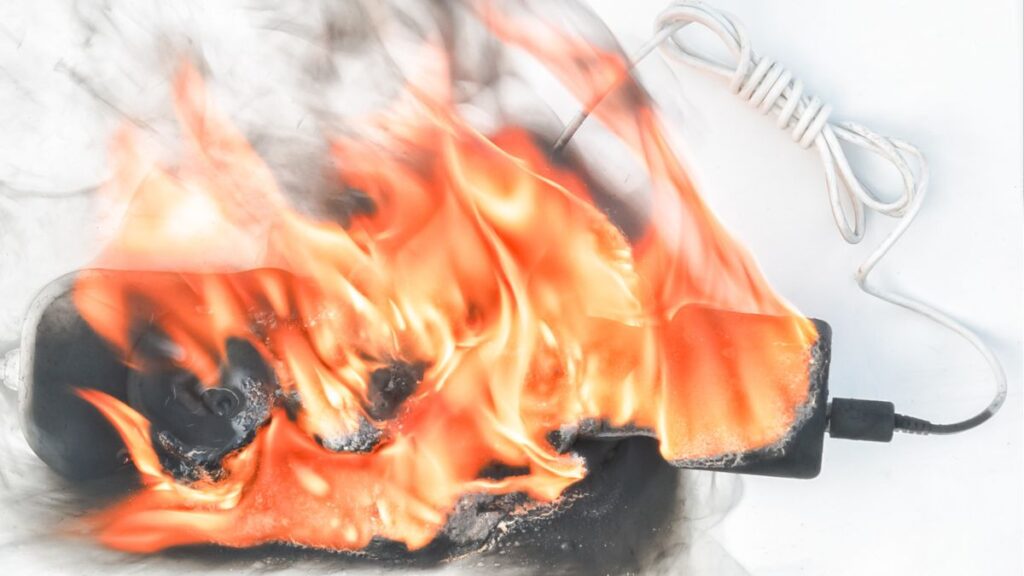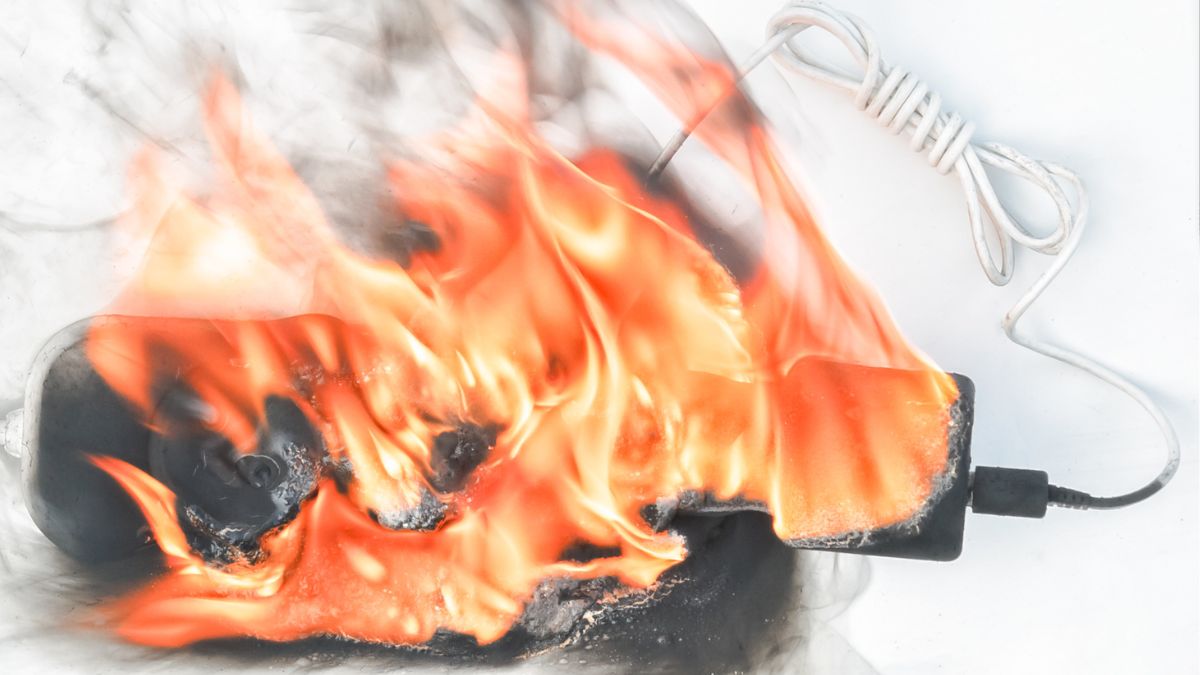Upon initial inspection, the small white plug packaged in bubble wrap and mailed seemed harmless enough.
Currently, hundreds of thousands of these devices are plugged into sockets in living rooms, kitchens, offices and children’s bedrooms across the country, powering mobile phones, of which 30 million are sold annually in the UK, not to mention the United States. Joined.
However, the explosion that occurred shortly after Katie Vines, a new mother, plugged the device into her bedroom wall was anything but innocuous and was accompanied by a plume of black smoke.
The explosion was so strong that it literally tore the charger in two, leaving a thick, sooty ring around the plug.
But this was not an isolated incident; the same device would be used a second time.

Care assistant Katie, who lives in Bristol with her partner Chris Smitherman and their 19-month-old daughter Aimee, still shudders at the thought of what could have been.
The November event took on disturbing significance after it was discovered that a faulty charger was likely the cause of the fire that claimed the lives of three generations of the same family last month, including a nine-week-old newborn.
The terrace house in Sheffield belonged to brothers Adyan Parwaiz Kayani, nine, and Amaan Parwaiz Kayani, seven, as well as their little sister Minahil, their aunt Anum Parwaiz, 20, and their grandmother Shabina Begum , 53 years old. living room and distributed throughout the house during the night of April 28.
Due to the severity of the damage, it may take fire investigators many weeks to determine the exact origin of the fire or even the type of charger that was being used.
However, a South Yorkshire Police spokesperson said an “electrical fault involving a faulty charging device” was “the most likely cause” of the fatal incident.
The tragedy brings to light growing concerns about potential dangers hidden beneath the surface of the common wall charger.
Although chargers that come with name-brand electronics are of the highest caliber and should not raise any red flags, low-cost, unapproved or “off-brand” chargers , the type typically purchased online, at retail Fleas or overseas, they can be dangerous instead of coming from reliable retailers and suppliers.
Many of the inexpensive devices examined by Electrical Safety First do not meet the criteria of the Electrical Equipment (Safety) Regulations Act 1994, the charity says.
Steve Curtler, director of product safety, warns: ‘It’s demand-driven. People want several chargers to carry on with their lives, one for home and one to take on vacation. . . When you can see one for £5 it seems worth the risk; at least that’s what it seems at the time.’
In China, unsafe devices are often made for as little as 3p

